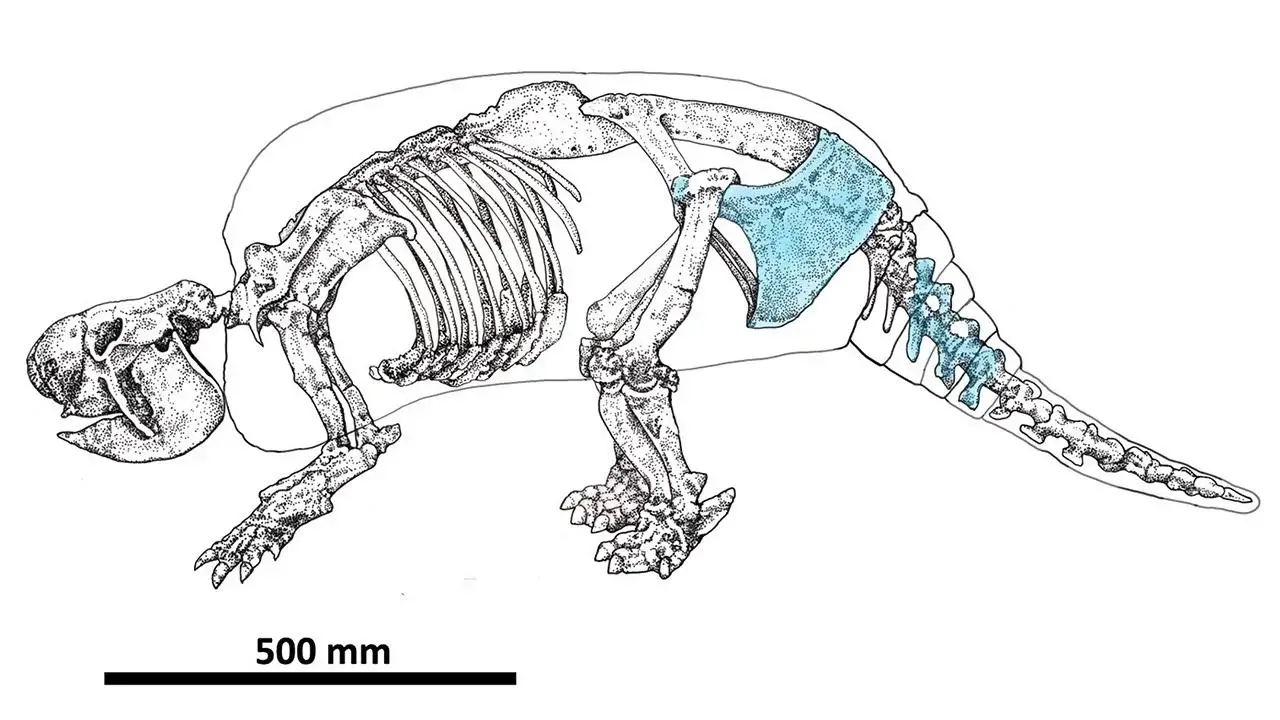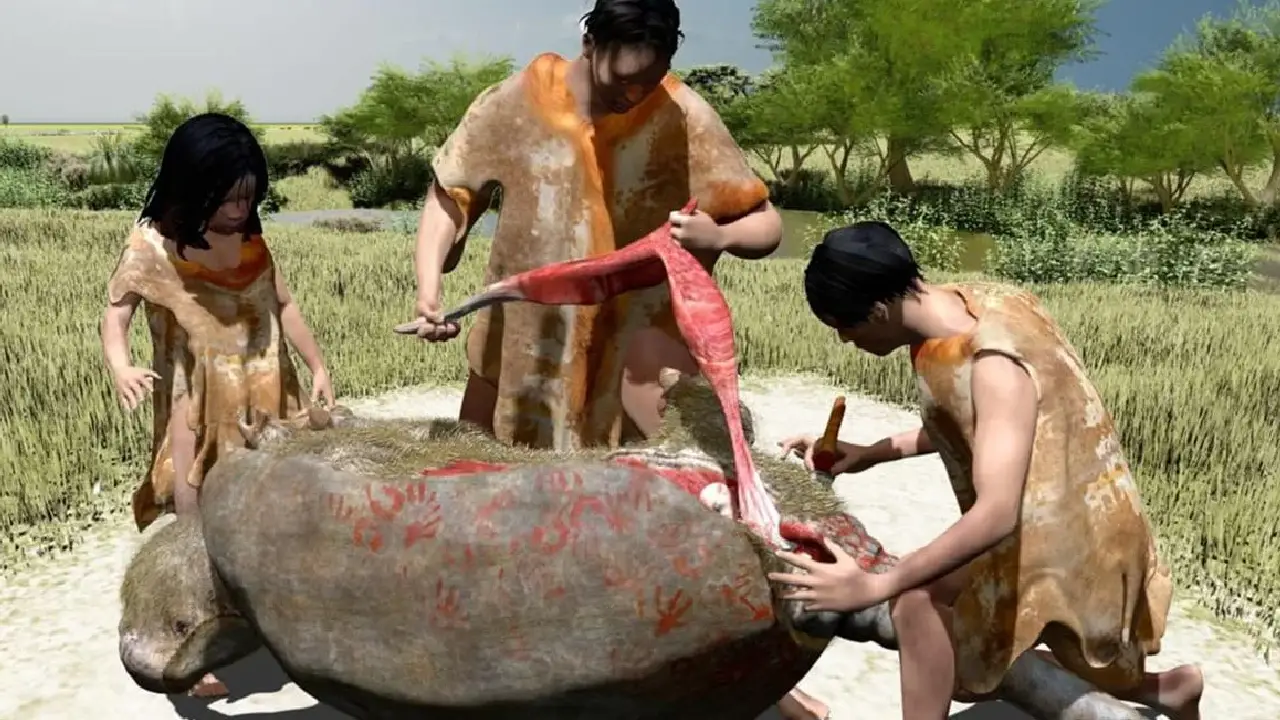A groundbreaking discovery in Argentina has revealed that ancient humans may have interacted with giant armadillo-like creatures known as glyptodonts as early as 21,000 years ago. This new evidence suggests that humans spread across the Americas much earlier than previously thought.
Researchers unearthed the fossil remains of a Neosclerocalyptus, a species of glyptodont, along the Reconquista River near Buenos Aires. The fossilized bones, including parts of the pelvis, tail, and carapace, were radiocarbon dated to be between 21,090 and 20,811 years old.

Detailed analysis of the bones revealed 32 linear cut marks, indicative of butchery using stone tools. These marks were not immediately visible but were uncovered through careful cleaning and 3D scanning. The researchers determined that the V-shaped cross-sections of the marks were consistent with the use of stone tools, ruling out other possibilities such as carnivore bites or natural processes.
The cut marks were concentrated on skeletal elements containing large muscle packs, such as the pelvis and tail. This suggests that glyptodonts, which were substantial creatures, were attractive targets for ancient humans seeking a significant source of meat.
The findings of this study push back the timeline of human presence and human-megafauna interactions in southern South America by nearly 6,000 years. This evidence aligns with other recent discoveries indicating an earlier arrival of humans in the Americas.
While no human-made tools were found at the site, the researchers remain hopeful that future excavations will uncover additional evidence, such as lithic tools. The study’s results contribute to the ongoing debate about the timing and manner of early human migration to South America. Current estimates range from 13,000 to over 20,000 years ago, but archaeological evidence has been sparse and often contentious.
This discovery provides compelling evidence of early human interactions with megafauna in South America, shedding new light on the history of human migration and settlement in the region.

Leave a Reply